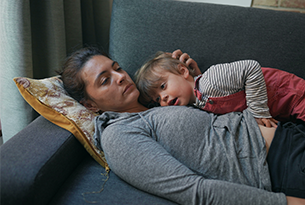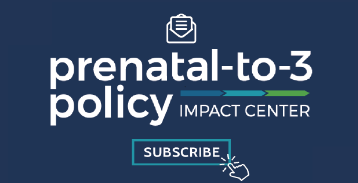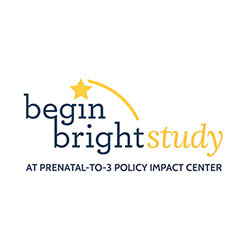The clock is ticking for tax day. And which state a family lives in will have a significant impact on whether they owe taxes or receive a refund—a boost of crucial unrestricted cash for the home.
Imagine a family of a single mother with two children. The mother works full time at a wage of $7.94/hour, slightly higher than the federal minimum wage. The household’s annual income is $16,510, or 64% of the federal poverty level (FPL). Federally, the household owes no taxes, and its income is the minimum level to receive a refund of the maximum value of the earned income tax credit (EITC) and child tax credit (CTC). However, variation in state tax policies results in vast differences in taxes owed or a refund received for a family with the same income across states.
Let’s consider the cases of Idaho, New Mexico, Oregon, and Pennsylvania, which represent the different combinations of tax liability and refundable credits that exist across the country. Across these states, the family could owe as much as $507 in state income tax in Pennsylvania or receive a refund of more than $2,800 in New Mexico.
This blog examines state policy choices related to the tax code. These choices, which can impact a family’s resources, include 1) whether to tax low-income households; 2) how much to tax low-income households; and 3) what credits to provide low-income working families.
State policy choice 1: Do low-income households pay taxes?
First, some definitions. Tax liability is the amount filers owe (before taking advantage of any tax credits). A tax floor is the minimum income level that triggers a tax liability for a filer.
In 18 of the states with a tax on earned income, the tax floor is so low that our stylized family mentioned above faces a state income tax liability, even though the family’s income is far below the federal poverty level of $25,820.
In Pennsylvania, which has a tax floor of $1 and a flat income tax rate of 3.07%, the family previously described would owe $507, which is a loss of desperately needed resources. In sharp contrast, Idaho has a tax floor of $20,800—or $10.00/hour for a full-time working single parent. So, the stylized family, with an annual income of $16,510, would owe no state income tax.

Financial hardship during early childhood can disrupt healthy brain development and compromise the foundation for long-term learning, behavior, and health.
State policy choice 2: How much does a low-income household pay in taxes?
The level of tax liability (or taxes owed) will vary depending on a combination of state policy parameters—including the tax rate and income brackets—that determine the total income tax liability for filers. Let’s assume our stylized family lives in one of the 18 states in which their $16,510 in income is above the tax floor, and they owe taxes. The family would pay income taxes of anywhere between $5 in Oklahoma to $608 in Oregon.
Among the remaining 33 states in which the family would be expected to pay $0, the family avoids a tax bill in two ways. Nine of these 33 states have no state income tax or no taxation of wages. In the remaining 23 states and the District of Columbia, the stylized family’s income falls below the states’ tax floor.
State choice 3: How can states reduce taxes owed by low-income households?
Tax credits reduce a filer’s tax liability. The two most generous and commonly claimed credits for low-income working families in the federal tax code are the EITC and the CTC. The generosity of the federal EITC makes it the most effective anti-poverty policy targeting children, and the 2021 temporary expansion of the federal CTC resulted in the single largest decrease in child poverty ever.
Many states have implemented one or both of these credits, often modeling them after the federal version. Our Policy Impact Calculator, which ranks each state on the impact its policy choices have on family resources, illustrates just how much these tax credits (and other state policy choices) mean for families. The 2023 ranking shows that each of the top 20 states with a state income tax offers a state EITC, CTC, or both. In these states, the state credits provide an 11% supplement to earnings on average. In contrast, none of the 10 bottom-ranked states with a state income tax offers a state EITC or CTC.

The level of resources our stylized family has to meet basic needs varies substantially, from more than $47,000 per year in the District of Columbia, to less than $21,000 in Georgia.
What is the cumulative effect of state policy choices on Tax Day?
Returning one last time to our family, let’s compare the state credits they receive relative to any taxes owed in the states of Idaho, New Mexico, Oregon, and Pennsylvania. This is in addition to a federal return of $9,804 ($3,200 from the CTC and $6,604 from the EITC)—more than half of the stylized family’s annual earnings.
- In New Mexico, the family can claim a refundable state EITC at 25% of the federal credit, equal to $1,651. The state CTC is a refundable credit of $600 per child, providing a total credit of $1,200 for this family. The family owes no state income tax, and therefore receives a cash refund of $2,851, the full value of the state EITC and CTC.
- In Oregon, the family can claim a refundable state EITC at 12% of the federal credit, equal to $792. The state CTC is a refundable credit of $1,000 per child, providing a total credit of $2,000 for this family. The combined value of the state EITC and CTC is $2,792 in refundable credits. The family owes $608 to Oregon for state income tax and is thus left with a tax refund of $2,184 in state credits.
- In Idaho, there is neither a refundable EITC nor CTC and the family owes no state income tax.
- In Pennsylvania, there is neither a state EITC nor a CTC, and the family owes $507 in state income tax. However, the family would qualify for the state’s tax forgiveness program and could include in their tax filing an application for 100% relief of their liability. Families in Pennsylvania with two dependents earning more than $27,750 are not eligible for any tax forgiveness.
For any income tax credit that targets low-income families, the proportion that is owed to the state in income taxes has important implications. Despite similar total credits claimed by the families in Oregon and New Mexico, the Oregon family has a smaller refund than the New Mexico family due to the higher tax liability in Oregon. The family in New Mexico has $667 more than the same family in Oregon and $3,358 more than the family in Pennsylvania. The USDA estimates that the family would spend at least $580 per month on food. Therefore, the New Mexico refund provides resources to cover nearly five months of food costs.
For policymakers aiming to help low-income families, it is important to understand the state tax code and credits and how they interact to affect families across the income distribution. To support families with low incomes, lawmakers may consider the full range of tax policy levers—credits, tax floor, deductions, and rates. Targeted tax credits, specifically, decrease tax liability and increase resources for families with low incomes without sacrificing significant tax revenue from all filers. Such state policy choices impact a parent’s ability to provide their children with stable housing, food, and other critical resources.




